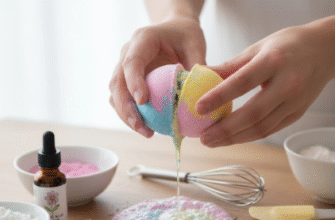Creating a spa bathroom is about more than just fancy fixtures and calming colours. It’s about crafting an environment dedicated to relaxation and rejuvenation, a personal escape from the everyday hustle. While heated floors, deep soaking tubs, and rainfall showerheads grab the spotlight, a less glamorous but critically important element often gets overlooked: ventilation. Proper air circulation isn’t just a building code requirement; it’s fundamental to maintaining the health, comfort, and longevity of your spa sanctuary.
Imagine stepping out of a luxurious steam shower, enveloped in warmth and tranquility, only to be greeted by condensation dripping down the walls, foggy mirrors, and the faint, persistent smell of dampness. It instantly shatters the spa illusion. This is where effective ventilation proves its worth. Spa bathrooms, by their very nature, generate significantly higher levels of moisture than standard bathrooms. Showers, baths, and especially features like steam showers or saunas release vast amounts of water vapour into the air. Without a way to efficiently remove this moisture-laden air, problems inevitably arise.
The Unseen Enemy: Excess Moisture
Humidity is the primary adversary in any bathroom, but its impact is amplified in a spa setting where water use is more prolonged and intense. When warm, moist air comes into contact with cooler surfaces like walls, mirrors, and windows, it condenses, turning back into liquid water. This constant dampness creates the perfect breeding ground for unwelcome guests.
Mold and Mildew Growth: These fungal intruders thrive in damp, warm environments. They can appear as unsightly black, green, or pink spots on grout, caulking, ceilings, and walls. Beyond the aesthetic displeasure, mold and mildew can release spores into the air, potentially triggering allergies, respiratory issues, and contributing to an overall unhealthy environment. Eradicating established mold can be difficult and costly, making prevention paramount.
Damage to Materials: Persistent moisture takes a toll on bathroom finishes and structures. Paint can peel and blister, wallpaper can bubble and detach, wood vanities or trim can warp and swell, and even metal fixtures can corrode over time. Protecting the investment you’ve made in high-quality materials requires diligent moisture control.
Lingering Odors: Dampness itself has a musty smell, but it also traps other odors from toiletries, cleaning products, and general use. A poorly ventilated bathroom never feels truly fresh, detracting significantly from the clean, serene atmosphere expected in a spa.
Beyond Moisture: Air Quality and Comfort
Ventilation isn’t solely about battling humidity; it’s also about ensuring good indoor air quality. Stagnant air can feel stuffy and oppressive. Furthermore, bathrooms often contain various chemicals.
Removing Airborne Pollutants: Cleaning products, aerosols like hairspray, perfumes, and even some building materials can release Volatile Organic Compounds (VOCs) into the air. An effective ventilation system helps exhaust these potential irritants, replacing stale indoor air with fresher air (often drawn from other parts of the house or directly from outside via specific systems).
Enhancing Comfort: A room thick with humidity feels warmer and more uncomfortable than the actual temperature suggests. Proper ventilation helps regulate the perceived temperature and removes that sticky, clammy feeling, making the space far more pleasant to occupy, especially after a warm bath or shower.
Choosing the Right Ventilation Strategy
Simply having a window isn’t always enough, especially during colder months or when privacy is desired. Effective spa bathroom ventilation typically relies on mechanical solutions.
Exhaust Fans: The Workhorse: The most common solution is a ceiling-mounted exhaust fan. Its job is to pull moist, stale air out of the bathroom and vent it directly outside the house (never into the attic, which just relocates the moisture problem). Key considerations include:
- Sizing (CFM): Fans are rated by the volume of air they can move, measured in Cubic Feet per Minute (CFM). A general guideline is 1 CFM per square foot of floor area for bathrooms up to 100 sq ft. Larger bathrooms or those with high ceilings (over 8 feet) or enclosed steam showers require higher CFM ratings. Undersized fans simply won’t cope with the moisture load.
- Noise Level (Sones): For a spa environment, quiet operation is essential. Fan noise is measured in sones – the lower the sone rating, the quieter the fan. Look for fans rated at 1.0 sones or less for near-silent operation.
- Features: Modern fans offer useful features like built-in humidity sensors (which automatically turn the fan on when humidity exceeds a set level and off when it drops), timers (to ensure the fan runs long enough after use), and integrated lighting or even heating elements.
Verified Performance: Always look for exhaust fans certified by the Home Ventilating Institute (HVI). This certification ensures the fan’s stated CFM and sone ratings have been independently tested and verified. Proper sizing is crucial; consult HVI guidelines or a professional to determine the correct CFM rating for your specific spa bathroom dimensions and features.
Advanced Systems (HRV/ERV): For homeowners focused on energy efficiency, especially in well-sealed modern homes, Heat Recovery Ventilators (HRVs) or Energy Recovery Ventilators (ERVs) can be integrated. These systems exhaust stale air while simultaneously bringing in fresh outside air, transferring heat (HRV) or heat and moisture (ERV) between the outgoing and incoming air streams. This pre-conditions the incoming air, reducing heating/cooling load, but represents a more complex and costly installation.
Making Ventilation Work Effectively
Installing a fan is only part of the solution; using and maintaining it correctly is just as important.
Run Time is Key: Don’t turn the fan off the moment you step out of the shower. It needs time to clear the residual moisture. Run the exhaust fan during your bath or shower and for at least 20-30 minutes afterward to ensure most of the humidity is removed.
Strategic Placement: Ideally, the exhaust fan should be located near the primary moisture source (the shower or tub) but away from the main air supply (like an HVAC vent or the gap under the door) to encourage air to flow across the room, drawing moisture towards the fan.
Regular Maintenance: Fan grilles collect dust and lint, reducing airflow. Clean the grille periodically according to the manufacturer’s instructions. Ensure the exterior vent flap is unobstructed by debris or nesting animals.
Provide Make-Up Air: Air being exhausted needs to be replaced. Usually, this happens naturally via the gap under the bathroom door. Ensure there’s about a 1/2 to 3/4 inch gap. If the bathroom is very tightly sealed, a dedicated air inlet or transfer grille might be necessary to prevent the fan from struggling.
Ventilation: The Unsung Hero of Your Spa Bathroom
In the quest for the perfect spa bathroom, ventilation might seem like a mundane detail. Yet, its role is profound. It protects your investment by preventing moisture damage. It safeguards your well-being by inhibiting mold growth and clearing airborne pollutants. Crucially, it preserves the very essence of the spa experience – comfort, freshness, and tranquility. A bathroom clouded with condensation and heavy with stale air can never truly be a sanctuary.
Think of ventilation not as an afterthought, but as a foundational pillar supporting the luxurious and relaxing atmosphere you desire. By prioritizing an effective, properly sized, and correctly used ventilation system, you ensure your personal spa remains a clean, healthy, and inviting retreat for years to come. It’s the invisible element that allows all the other luxurious features to truly shine.








